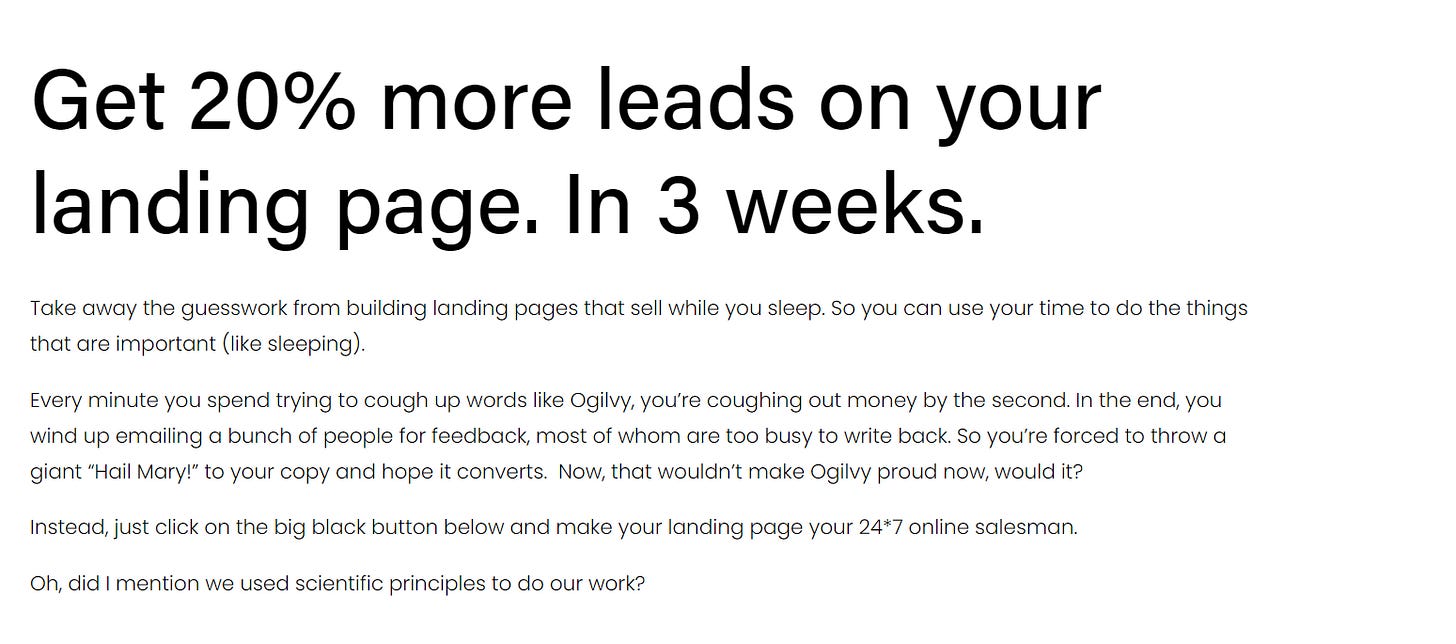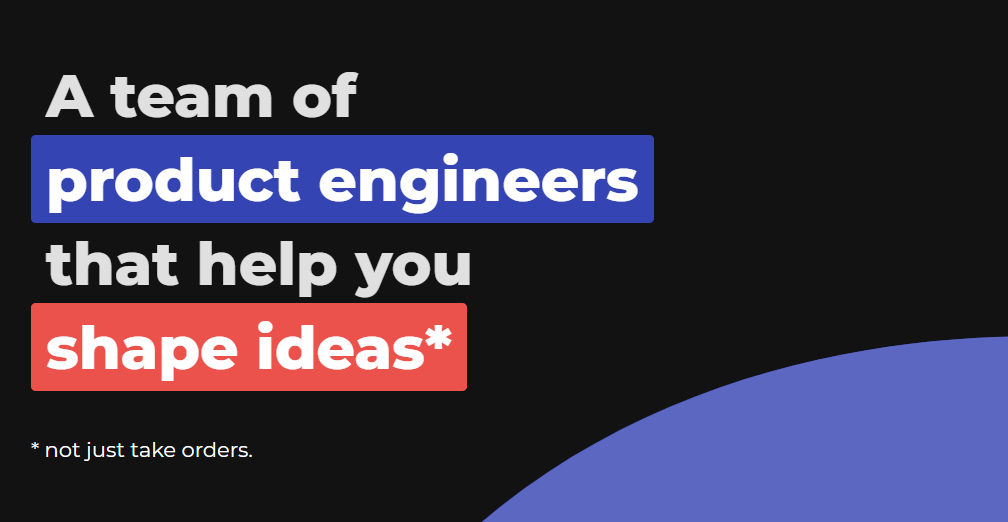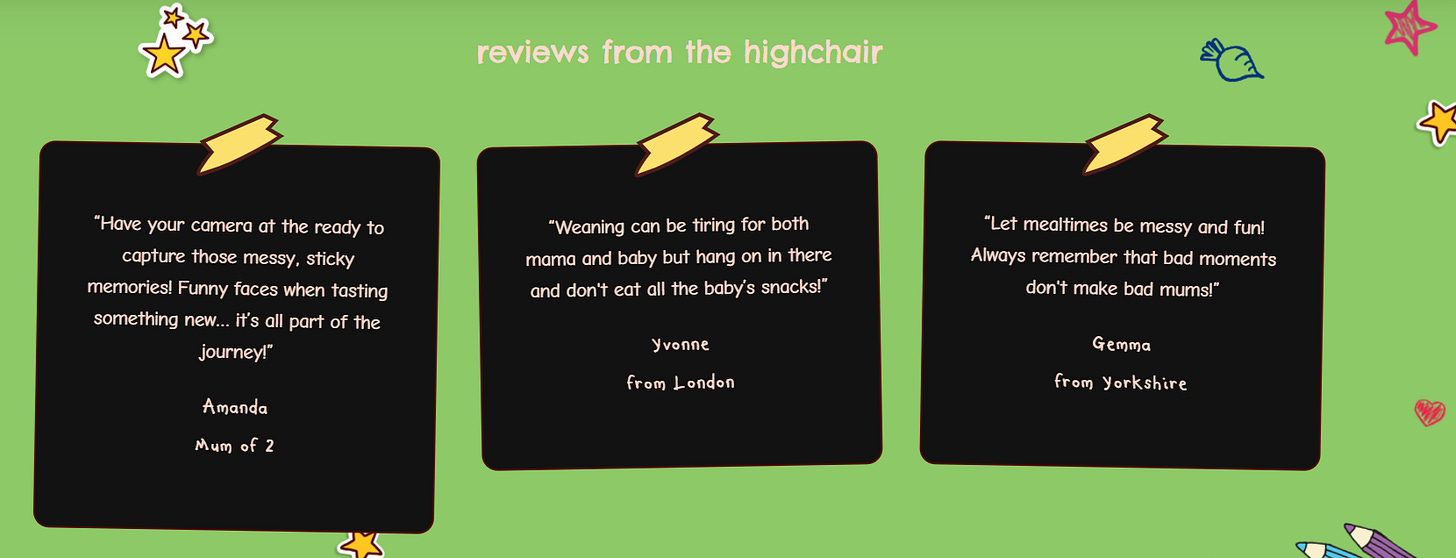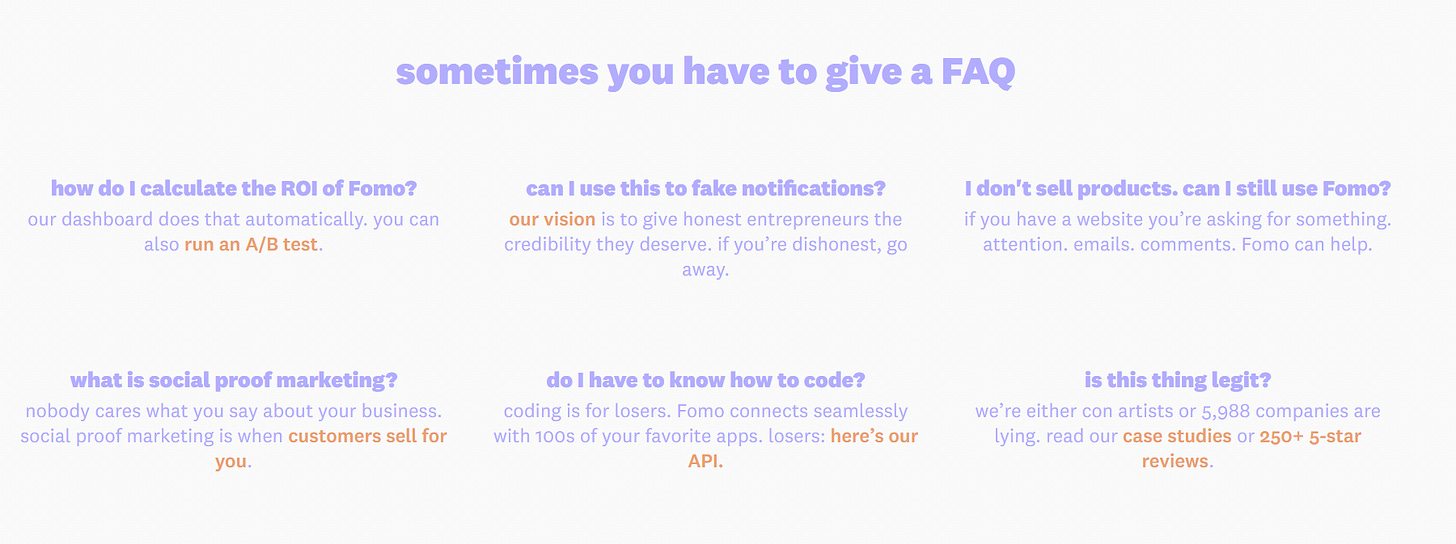How to convince your prospect to buy from you. Using 27 words.
In this issue, I'll cover the one-sentence that will make you a better marketer and how you can apply it in your landing page.
Hey friends,
Welcome to Issue #23 of Market Curve - a weekly newsletter exploring the intersection of marketing with consumer psychology and behavioral economics. Through Market Curve, I hope to offer marketers and founders a different perspective on how to better understand their customers - one that is rooted in science.
Help me get to 1500 subscribers by the end of May by doing any of the following:
Forward this email to friends, family and peers.
Share within your existing community or Slack channels
Share on LinkedIn, Twitter etc with a short note.
Marketing is persuasion at scale. Any marketing effort needs to convince your prospect why your product or service is the best placed to solve his/her problem.
In this issue, I'll cover:
Why effective persuasion is simple.
The one-sentence that will make you a better marketer.
The 6 elements of persuasion.
How you can apply these 6 elements in your own landing page with examples.
But before we start, a word from our sponsor:
You know how you struggle with staring at a blank screen for hours trying to come up with words for your landing page copy? Words that are supposed to make your prospects whip out their credit cards and shell over money to you?
Market Curve rids you off that headache.
Now you can spend your new found time doing things you actually enjoy (like sleeping). You get your landing page copy (sometimes design) within 3 weeks without going broke.
As a thank you for being a beloved subscriber, you get a free call and the chance to hear my sultry voice over Zoom (or Google Meet if you’re biased) as I help you navigate your tricky landing page challenges.
Effective Persuasion is Simple.
Persuasion is simple once you understand one core idea: How humans think. In the world of business, that means understanding how consumers make decisions on the internet. There is a lot of resources out there adding to the complexity. But once you get the chance to clear out the smoke you'll find that all marketing jargon boils down to few simple ideas.
Blair Warren has been studying consumer psychology over decades now. One of his more seminal works is his book "One Sentence Persuasion". Through this book, he cuts down on all the noise that surrounds marketing, conversion and the like. His goal is to condense all the core ideas into a single sentence - a sentence so simple that even your grandma could understand.
The one-sentence that will make you a better marketer.
The one-sentence persuasion is a way where you can save a lot of time by learning one idea and applying it a thousand times.
This (slightly long) sentence compresses all persuasion techniques into just 27 words. And it's a sentence that's battle-tested. Both in the academic circles as well as in real-life.
Here is the sentence:
people will do anything for those who encourage their dreams, justify their failures, calm their fears, confirm their suspicions, and help them throw rocks at their enemies".
At first glance, the sentence looks deceptively simple. Which it is. It's nothing we haven't come across before. It's nothing brand new. But don't be so quick to dismiss it. Often, the simple things are the most powerful.
If you look at the sentence closely, you'll find that it contains 6 key ideas.
The sentence has not mention of the word "you".
People will do anything for those who encourage their dreams.
People will do anything for those who justify their failures.
People will do anything for those who calm their fears.
People will do anything for those who confirm their suspicions.
People will do anything for those who help them throw rocks at their enemies.
These are all the 6 ideas that we need to know. We'll look at these ideas in more detail in the next section.
The 6 elements of persuasion.
In the last section, we looked at the 6 elements that make up the one-sentence persuasion. In this section, I'll share excerpts from Blair Warren with you for each of these 6 elements. By the end of this section, you will have a much better understanding of these 6 elements.
….encourage people's dreams.
Blair Warren is typing now...
Parents often discourage their children’s dreams “for their own good” and attempt to steer them toward more “reasonable” goals. And children often accept this as normal until others come along who believe in them and encourage their dreams. When this happens, who do you think has more power? Parents or strangers?
…justify their failures.
While millions cheer Dr. Phil as he tells people to accept responsibility for their mistakes, millions more are looking for someone to tell them that they are not responsible for a lot in life. Sometimes, assuring others they are not responsible is essential for gaining influence over theirs. One need look no further than politics to see this powerful game played at its best.
…calm their fears
When we are afraid, it is almost impossible to concentrate on anything else. And while everyone knows this, what do we do when someone else is afraid and we need to get their attention? We tell them not to be afraid and expect that to do the trick. But there are people who do not tell us not to be afraid. They work with us until our fear subsides. They offer support. They tell us stories. But they do not tell us how to feel and expect us to feel that way. When you are afraid, which type of person do you prefer to be with?"
…confirm their suspicions:
One of our favorite things to say is “I knew it.” There is just nothing quite like having our suspicions confirmed. When another person confirms something that we suspect, we not only feel a surge of superiority, we feel attracted to the one who helped make that surge come about.
…help them defeat their enemies
Nothing bonds like having a common enemy. Those who understand this can utilize this. It has been said that everyone you meet is engaged in a great struggle. The thing they are struggling with is their enemy. Whether it is another individual, a group, an illness, a setback, a rival philosophy or religion, or what have you, when one is engaged in a struggle, one is looking for others to join him. Those who do become more than friends. They become partners.
There is no "you" in persuasion.
There isn’t a word about your wants, your needs, your hopes or your concerns. There isn’t a word about your offer or proposal. There isn’t a word about what you think. It is all about the other person. You should focus on the other person, not forget yourself. Or to be more specific, when you are with a person you want to influence, your primary focus should be on that person. Do not “look past” him or her by focusing on your intentions.
How you can apply these 6 elements in your own landing page.
If you've read this far, give yourself a pat on the back. Because now you know 3 things:
You know that powerful ideas are the most simple.
You know what the one-sentence persuasion is.
You know the 6 elements of the one-sentence persuasion.
In this section, we'll see how we can use these 6 elements in our landing page copy.
How to encourage your prospect's dream on your landing page.
Every product exists only for this one reason: solving a desire that takes them one step closer to the "dream state". That's all. Take any product under the sun and you'll find it fits neatly into this equation. The first step, therefore, to understanding your prospect's dream is to get to know the prospect.
Here are 5 things you can do to get to know your prospect:
Find out your prospect's desire
What is that dream that keeps him up at night?
What is the number one problem he faces?
What is so big about that problem that he needs to solve it?
How is it impeding him from fulfilling his dream?
Once you answer these questions, you'll be able to take them from their actual state to their desired state.
So now the question is, how do you go about using this information on your landing page? Here are 5 ideas for you to use on your landing page (with examples).
Put your prospect's desire in your headline.
Put your prospect's dream in the CTA copy.
List your prospect's problem in the value prop headlines.
List the solutions to the problems in the value prop sub-headlines.
List how the product is helping him achieve his dream in the sub-headline.
How to justify your prospect's failures on your landing page
We hate failing. All of us do. It's no secret. Which is why it's important to put those failures behind and move forward. And sometimes the best way to move forward is to know that our failures can be justified. This is the same for your product or service too. If you assure your customers, that their pains and struggles is not their fault, you become an endearing figure. Someone they can begin to trust.
Here are 5 things you can do on your landing page to justify your prospect's failures:
Use the customer's language in your landing page copy.
Acknowledge the main problem causing their failure in the headline.
Acknowledge that their failures are not their fault in the value prop sections.
Use customer testimonials showing other people facing problems similar to the prospect.
Use your "about us" section to mention how you can solve your prospect's main problem.
How to calm your prospect's fears on your landing page.
When you begin to understand your prospect, you'll see that there are certain objections and fears he has about using your product for the first time. Your job is to make him feel comfortable and assuage those fears. Here are 5 things you can do to assuage those fears:
Use friendly, easy to use language on your page. Write as if you're speaking to a friend.
Use social proof to show your prospect that he is not alone in his fears.
Have an FAQ section to answer any additional questions that your prospect might have.
Address any objections your prospect might have on your CTA and the headline.
Offer him a free trial without any commitments to try out your offering.
How to confirm your prospect's suspicion on your landing page.
Like we saw before, confirming your prospect's suspicion is a great way to show them that you are on their side. You need to show your prospects that you're not there to make a quick buck but that you actually care about their problems. Here are 5 things you can do to confirm your prospect's suspicion on your landing page:
Get a testimonial from a customer showing they had the same suspicions too which turned out to be true.
Talk to more such customers and use them on your landing page copy.
Use "you" rather than "we". Speak to them. Rather than at them.
Record an explainer video showing that their suspicions is valid and deserves to be acknowledged.
How to help your prospect's defeat their enemies on your landing page.
You need to assume the role of a guide and show them the way. You need to provide them the tool that will help them win over their enemy. You need to build trust and credibility so that your prospects trust you. Here are 5 ways you can help your prospects defeat their enemies on your landing page.
Acknowledge their main problem in the headline.
Show them how you and your product is best placed to solve that problem in the sub-headline.
Pose your prospect's problems as questions.
Show how you've helped other people similar to the prospect defeat their enemies.
Have a small ask on the CTA to build trust in small, incremental steps.
These are the 5 elements that you can use on your landing page copy to convince your prospects to trust you, engage with you, and buy from you. And remember the sixth one, there is no "you". Always make sure to put the prospect first. They're the hero of your journey.
Key Takeaways:
Your prospects don't care about you. They care what you can do for them.
Your prospect will do anything for you if you encourage their dreams, calm their fears, confirm their suspicions, and justify their failures.
Get a deep understanding of your prospect. Make sure you put your prospect first.
Learn more advanced techniques:
Via Market Curve, I'll train you or your company in ten times more growth marketing topics than are featured in this essay. We also provide bespoke landing page copywriting and design services for these 3 companies:
Ideation stage companies: Companies who are just validating their idea. Market Curve helps them get a quick landing page review/design from a professional team.
MVP Stage companies: Companies who have validated their MVP and are looking to grow. Market Curve helps these companies scale faster without breaking their bank.
Post PMF companies: Companies who have achieved product-market fit and are looking to scale aggressively. Market Curve helps these business with weekly consultation calls, refining their positioning, and writing and designing multiple landing pages.
At this point, you can do one of two things:
You can set up a free consultation call with us.
Sign up to our bi-weekly newsletter to get these essays directly in your inbox.
Thank you so much for reading! If you want to get in touch, you can respond directly to this email or reach out on Twitter or LinkedIn.
Always excited to meet like-minded people!
Until next week!
— Shounak.





























